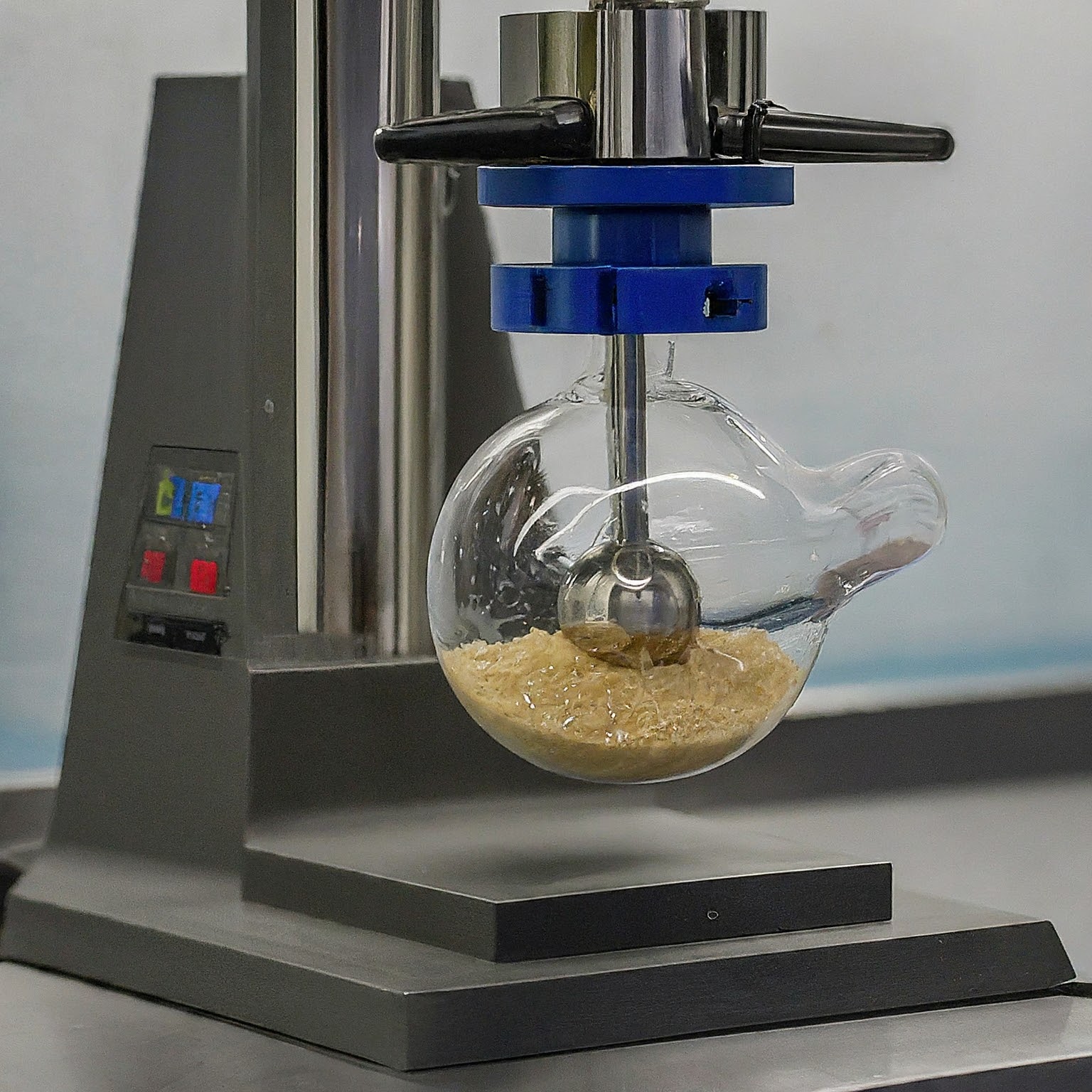Acquiring a Planetary Ball Mill in Australia: A Mechanical Design Perspective
Introduction
The procurement of a planetary ball mill for laboratory applications in Australia necessitates a comprehensive understanding of the equipment's operational principles, design parameters, and the specific requirements of the intended application. This article will delve into the technical aspects of planetary ball mills, providing a framework for informed decision-making when selecting a suitable machine for Australian laboratories.
Fundamental Principles of Planetary Ball Milling
 A planetary ball mill is a high-energy milling device that employs centrifugal and collision forces to reduce particle size. It comprises a central stationary disk and one or more satellite disks that orbit around it while simultaneously rotating on their own axis. Grinding jars, containing the material to be processed and grinding media, are attached to the satellite disks. The intricate motion generates intense impact and attrition forces, resulting in efficient particle size reduction.
Key Components and Their Function
Mill Body: The housing that encapsulates the grinding chamber.
Satellite Disks: Rotating disks that hold the grinding jars.
Grinding Jars: Containers for the material and grinding media.
Grinding Media: Typically made of materials like steel, tungsten carbide, or agate, used for grinding.
Drive System: Motors and gears that provide the necessary rotational speed.
Design Parameters and Performance
The efficacy of a planetary ball mill is contingent upon several design parameters:
Speed Ratio: The ratio of the rotational speed of the satellite disks to the central disk significantly influences the grinding efficiency. Higher speed ratios generally result in increased impact forces.
Jar Capacity: The volume of the grinding jar determines the processable material quantity.
Material Compatibility: The choice of mill body, grinding jars, and grinding media must be compatible with the processed material to prevent contamination and corrosion.
Drive System: The power and torque of the drive system dictate the mill's capacity and grinding intensity.
Grinding Media and Their Role
The selection of grinding media is crucial for optimal milling performance. Factors such as material hardness, particle size distribution, and desired final particle size influence the choice of grinding media. Common options include steel, tungsten carbide, agate, and zirconia.
Applications of Planetary Ball Mills
Planetary ball mills are versatile tools employed across various scientific and industrial domains:
Materials Science: Synthesis of nanomaterials, alloying, and composite preparation.
Chemistry: Sample preparation, mixing, and homogenization.
Pharmaceuticals: Drug development, particle size reduction, and ingredient mixing.
Ceramics: Grinding of ceramic materials for diverse applications.
Environmental Science: Sample preparation for analysis.
A planetary ball mill is a high-energy milling device that employs centrifugal and collision forces to reduce particle size. It comprises a central stationary disk and one or more satellite disks that orbit around it while simultaneously rotating on their own axis. Grinding jars, containing the material to be processed and grinding media, are attached to the satellite disks. The intricate motion generates intense impact and attrition forces, resulting in efficient particle size reduction.
Key Components and Their Function
Mill Body: The housing that encapsulates the grinding chamber.
Satellite Disks: Rotating disks that hold the grinding jars.
Grinding Jars: Containers for the material and grinding media.
Grinding Media: Typically made of materials like steel, tungsten carbide, or agate, used for grinding.
Drive System: Motors and gears that provide the necessary rotational speed.
Design Parameters and Performance
The efficacy of a planetary ball mill is contingent upon several design parameters:
Speed Ratio: The ratio of the rotational speed of the satellite disks to the central disk significantly influences the grinding efficiency. Higher speed ratios generally result in increased impact forces.
Jar Capacity: The volume of the grinding jar determines the processable material quantity.
Material Compatibility: The choice of mill body, grinding jars, and grinding media must be compatible with the processed material to prevent contamination and corrosion.
Drive System: The power and torque of the drive system dictate the mill's capacity and grinding intensity.
Grinding Media and Their Role
The selection of grinding media is crucial for optimal milling performance. Factors such as material hardness, particle size distribution, and desired final particle size influence the choice of grinding media. Common options include steel, tungsten carbide, agate, and zirconia.
Applications of Planetary Ball Mills
Planetary ball mills are versatile tools employed across various scientific and industrial domains:
Materials Science: Synthesis of nanomaterials, alloying, and composite preparation.
Chemistry: Sample preparation, mixing, and homogenization.
Pharmaceuticals: Drug development, particle size reduction, and ingredient mixing.
Ceramics: Grinding of ceramic materials for diverse applications.
Environmental Science: Sample preparation for analysis.
 Purchasing a Planetary Ball Mill in Australia
Identifying Specific Requirements
Before acquiring a planetary ball mill, a comprehensive assessment of the intended application is essential:
Sample Volume and Size: Determine the required capacity of the grinding jars.
Material Properties: Consider the hardness, toughness, and other characteristics of the material.
Desired Particle Size: Specify the target particle size distribution.
Grinding Atmosphere: Determine if ambient or controlled atmosphere is necessary.
Budget: Establish a realistic financial framework for the equipment and accessories.
Evaluating Australian Suppliers
When selecting a supplier within Australia, consider the following factors:
Product Range: Ensure the supplier offers suitable ball mills for the specific application.
Technical Expertise: Assess the supplier's knowledge and experience in ball milling technology.
After-Sales Support: Evaluate the availability of spare parts, maintenance services, and technical assistance.
Warranty and Service Agreements: Understand the terms and conditions of the warranty.
Pricing and Payment Terms: Compare prices and payment options from different suppliers.
Installation, Commissioning, and Operator Training
Proper installation, commissioning, and operator training are essential for safe and efficient operation. Adherence to manufacturer guidelines and local safety regulations is paramount.
Conclusion
The acquisition of a planetary ball mill requires a meticulous evaluation of various factors. By comprehending the underlying principles, assessing specific needs, and conducting thorough research on available options within the Australian market, researchers and industry professionals can make informed decisions to optimize their laboratory processes.
Note: To enhance the article's depth and practical value, consider incorporating specific case studies, performance data, and detailed calculations related to planetary ball milling.
Would you like to proceed with this outline and expand on specific sections?
Purchasing a Planetary Ball Mill in Australia
Identifying Specific Requirements
Before acquiring a planetary ball mill, a comprehensive assessment of the intended application is essential:
Sample Volume and Size: Determine the required capacity of the grinding jars.
Material Properties: Consider the hardness, toughness, and other characteristics of the material.
Desired Particle Size: Specify the target particle size distribution.
Grinding Atmosphere: Determine if ambient or controlled atmosphere is necessary.
Budget: Establish a realistic financial framework for the equipment and accessories.
Evaluating Australian Suppliers
When selecting a supplier within Australia, consider the following factors:
Product Range: Ensure the supplier offers suitable ball mills for the specific application.
Technical Expertise: Assess the supplier's knowledge and experience in ball milling technology.
After-Sales Support: Evaluate the availability of spare parts, maintenance services, and technical assistance.
Warranty and Service Agreements: Understand the terms and conditions of the warranty.
Pricing and Payment Terms: Compare prices and payment options from different suppliers.
Installation, Commissioning, and Operator Training
Proper installation, commissioning, and operator training are essential for safe and efficient operation. Adherence to manufacturer guidelines and local safety regulations is paramount.
Conclusion
The acquisition of a planetary ball mill requires a meticulous evaluation of various factors. By comprehending the underlying principles, assessing specific needs, and conducting thorough research on available options within the Australian market, researchers and industry professionals can make informed decisions to optimize their laboratory processes.
Note: To enhance the article's depth and practical value, consider incorporating specific case studies, performance data, and detailed calculations related to planetary ball milling.
Would you like to proceed with this outline and expand on specific sections?
